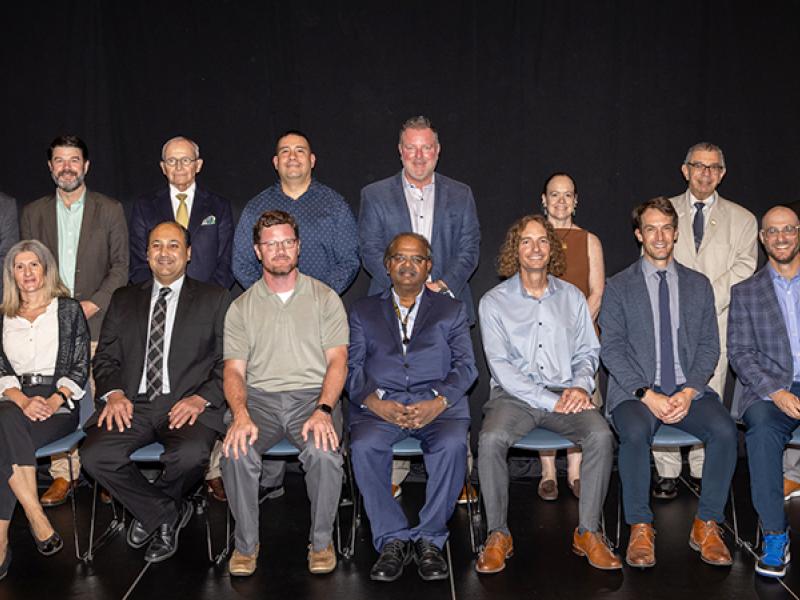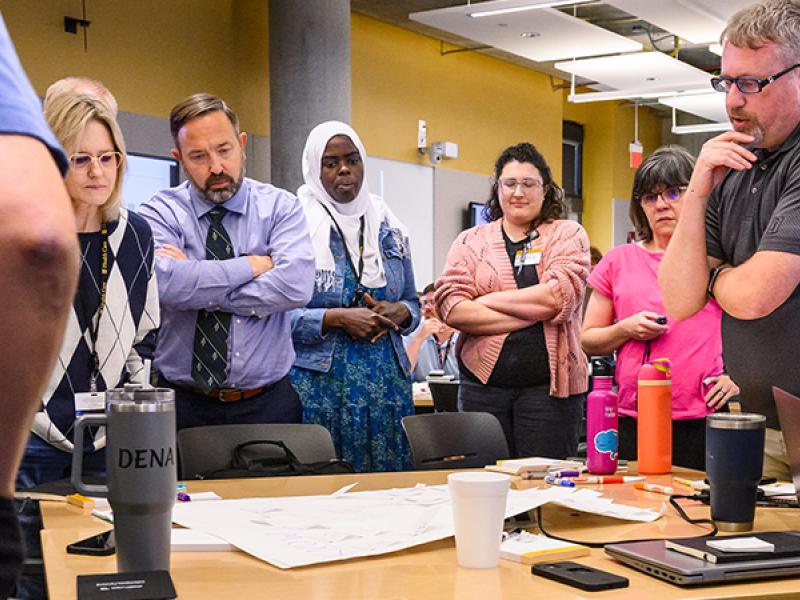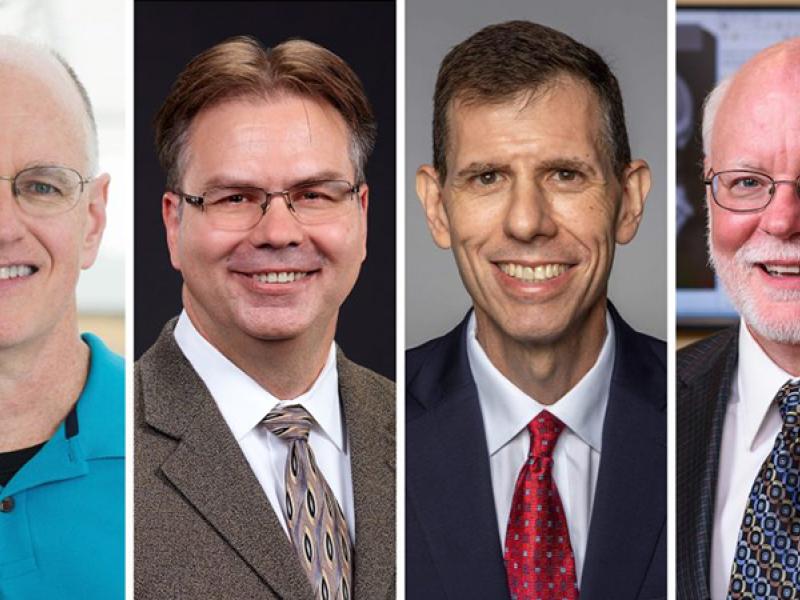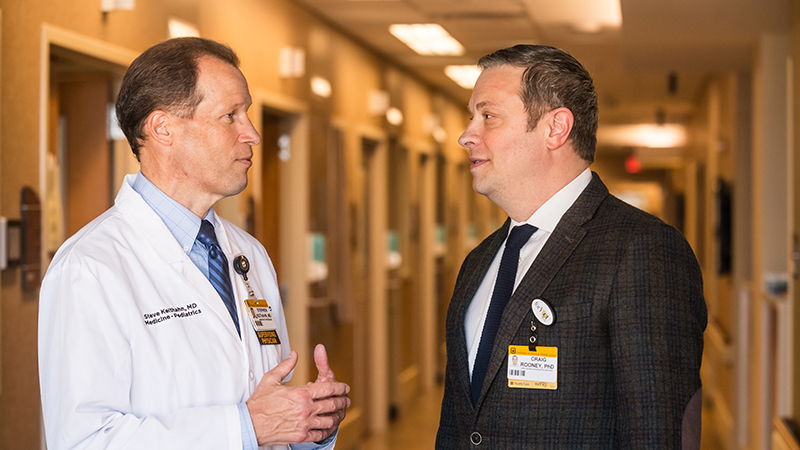
Stephen Keithahn, MD, reached his crossroads about a dozen years ago. He was working long hours in a two-person internal medicine and pediatrics practice. At home, he and his physician wife had recently welcomed their fourth child. And he couldn’t always find time to practice what he preached to his patients about maintaining a healthy lifestyle.
It added up to a case of burnout.
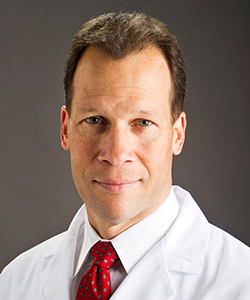
“I was struggling to find the joy in medicine,” Keithahn said. “Something had to change. I was in my 40s, and that was a time when I really did a lot of soul-searching. I thought, ‘If you’re going to change careers, now is the time to do it.’ I thought about going to law school or business school and reinventing myself.”
He sold his practice and started working part-time as an emergency medicine physician. He devoted more time to his family and himself. He became a triathlete and lost nearly 40 pounds.
Keithahn ultimately decided to get back into medicine full-time, but he did it on his own terms in an academic health system at the University of Missouri.
“My wife always said that I was happiest when I was a chief resident, a sort of junior faculty after residency,” Keithahn said. “A faculty position opened up here in internal medicine and pediatrics. I took that nine years ago, and it’s the happiest I’ve been.
“I love working here. My clinic is highly functional, allowing me to be productive and provide outstanding care for my patients. Our learners are fun to teach, and the university community has been awesome.”
Keithahn hopes the solution that worked for him — the combination of a better work environment and self-care — can be applied to other MU clinicians.
In September 2018, Keithahn was appointed as the first chief wellness officer of MU Health Care and the School of Medicine. He is the former chief of the Office of Clinician Well-Being, which is tasked with improving the personal and professional wellness of the university’s physicians, physician assistants and nurse practitioners.
He has spent the last year learning more about the scope of the burnout problem and finding strategies to help.
Defining Burnout
Physician burnout is defined as a work-related condition marked by emotional exhaustion, depersonalization and reduced feelings of personal accomplishment. About 50% of physicians nationwide report feeling burned out, and doctors have the highest suicide rate of any profession.
“It is difficult for a lot of clinicians to admit there is a problem and reach out for help,” said Craig Rooney, PhD, the former program director and counseling psychologist of MU Health Care’s Office of Clinician Well-Being. “Historically, there was a fear it could impact their licenses and impact their livelihoods. Also, they’re used to being in the role of caregiver, not care receiver. More broadly, there are stigmas around mental health that society had that permeated the profession, as well.”
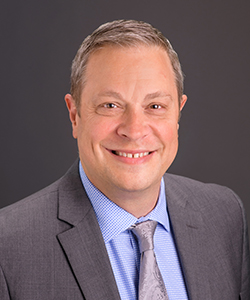
Heavy workloads, inordinate time spent on documentation, loss of autonomy and work-home conflicts contribute to physician burnout. A study published in the Annals of Internal Medicine in 2016 found physicians in ambulatory care clinics spent nearly two hours on clerical tasks for every one hour spent with patients.
“If you look at how we do our documentation in the U.S. versus the rest of the world, our documentation serves more of a billing function,” Keithahn said. “My note used to be a patient care document and a legal document. It still has that tripartite role, but the billing aspect has become an increasingly predominant component. Physicians go into medicine to take care of patients, not to take care of a medical record.
“Everyone feels overloaded. Sicker patients, tougher social situations, the opioid crisis — we have a lot of complicated patients with a lot of needs, and we have less time to spend with them.”
The burnout fallout goes beyond its effect on doctors’ wellness and their ability to treat patients. It contributes to doctors changing jobs or leaving the profession, which can affect the bottom line for health systems. Keithahn said it costs at least $250,000 to replace one doctor at MU Health Care. An average of 57 physicians leave each year, and although Keithahn doesn’t have data to directly tie the 9% turnover rate to physician burnout, he suspects it may be a contributing factor.
“We cannot fully achieve our clinical, teaching and research missions without a healthy, high-functioning and stable clinician workforce,” Keithahn said.
Investing In Wellness
Keithahn focuses on high-impact, low-cost strategies to improve clinician well-being. He divides the interventions into three categories: culture of wellness, practice efficiency and personal resilience.
To improve the culture, MU’s Office of Clinician Well-Being will conduct the American Medical Association’s burnout survey annually and then work with department and division leaders to address concerns raised in the results.
“We are planning to do systematic measurement with statistically valid tools so we can see how we’re doing,” Rooney said. “Individuals will have confidentiality, but we will be asking for demographic data to see if there are certain departments or divisions that are struggling more than others or see by gender if there are issues we need to look at.”
The most obvious way to improve efficiency is to minimize the time clinicians spend documenting patients with the electronic health record (EHR). Federal mandates require clinicians to do much of the documentation rather than delegating the job to other staff members.
MU Health Care recently adopted a time-saving tool by installing a tap-and-go log-in system. Rather than entering a user name and password for each EHR update, clinicians, nurses and staff can just tap their ID badge on the screen to log in. Keithahn said that can save clinicians as much as 17 minutes per day.
Five years ago, family medicine physicians Margaret Day, MD, and Jeffery Belden, MD, took it upon themselves to improve their department’s efficiency. They created a monthly “happy hour” — no alcohol involved — in which family medicine physicians gather with their laptops and share EHR tips and shortcuts.
Day said a great time-saving idea sprang from one of the happy hours. She worked with the Tiger Institute for Health Innovation to create one page within the EHR portal where family medicine physicians could click on common orders for medications, lab tests and imaging rather than navigating through multiple pages to make all the orders.
“One burnout driver is a perceived lack of control,” Day said. “When you feel you have optimized your use of a difficult-to-use tool, that can bring back some sense of control over your work life. The social support aspect was something we didn’t set out to do with our happy hours, but it definitely played out that way. The same group of people kept returning. It provided an avenue for social support in addition to helping with efficiency and work-life imbalance.”
The last piece of the puzzle is personal resilience. Keithahn advocates for clinicians to take care of themselves with proper sleep, nutrition and exercise, but the Office of Clinician Well-Being’s contribution to resilience is to offer mental health support. Rooney will counsel clinicians who need help and connect them with psychiatrists or other support services if needed.
“We’re all trying to be cautious to not blame the clinician for the burnout,” Rooney said. “I was at a conference and somebody said, ‘If there is a canary in a coal mine that’s not doing well, you don’t just tell it to put on a gas mask.’ Sometimes with the safety net stuff or mindfulness or self-care, we want to be careful that we’re not giving the message that it’s your fault or here’s another thing to do better at.
“Medicine is a broad field and a very noble field. Our clinicians are doing really important work. They are the talent that makes the whole thing go. It’s a real honor for me to work with them and try to make their lives better.”



